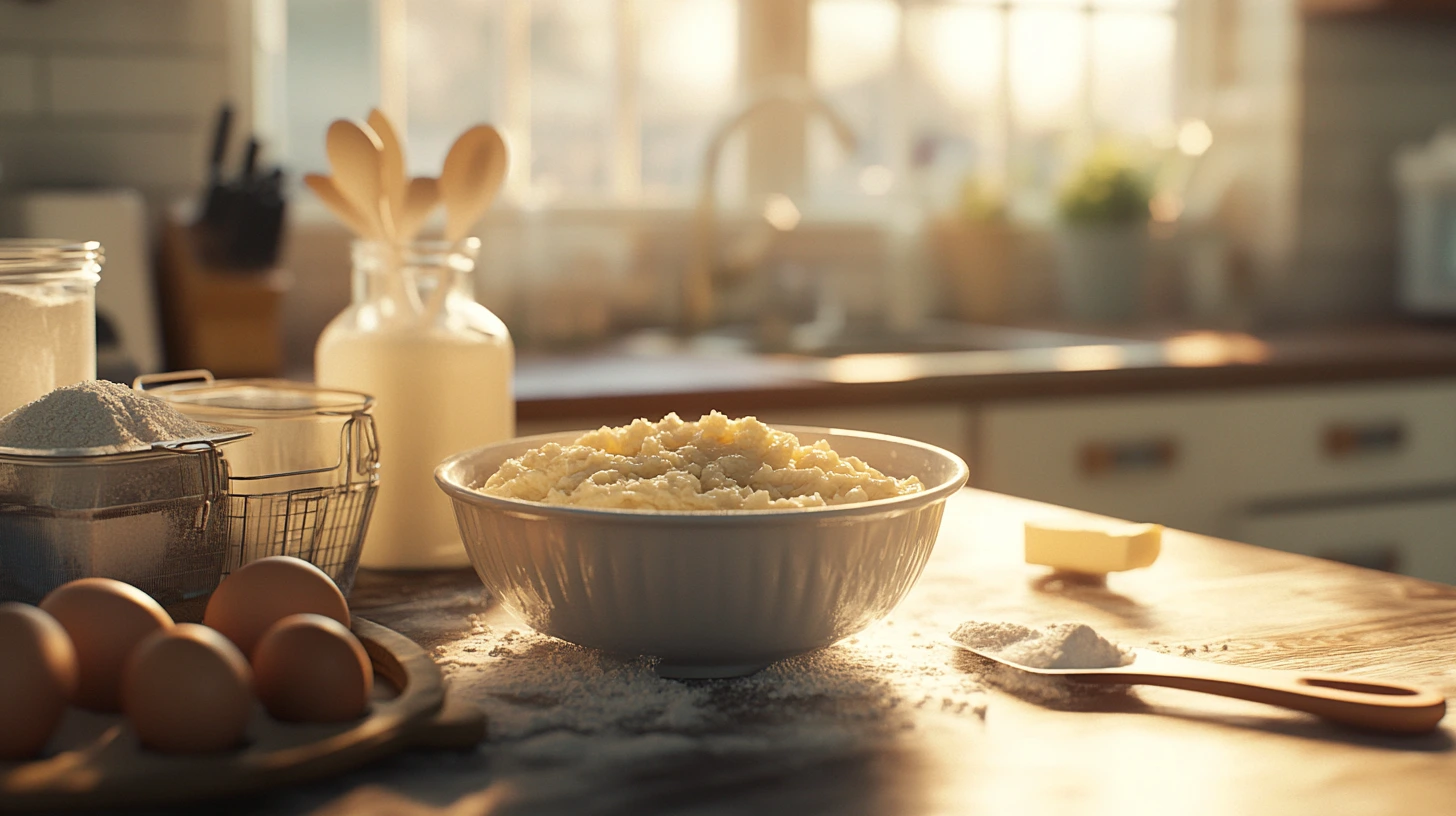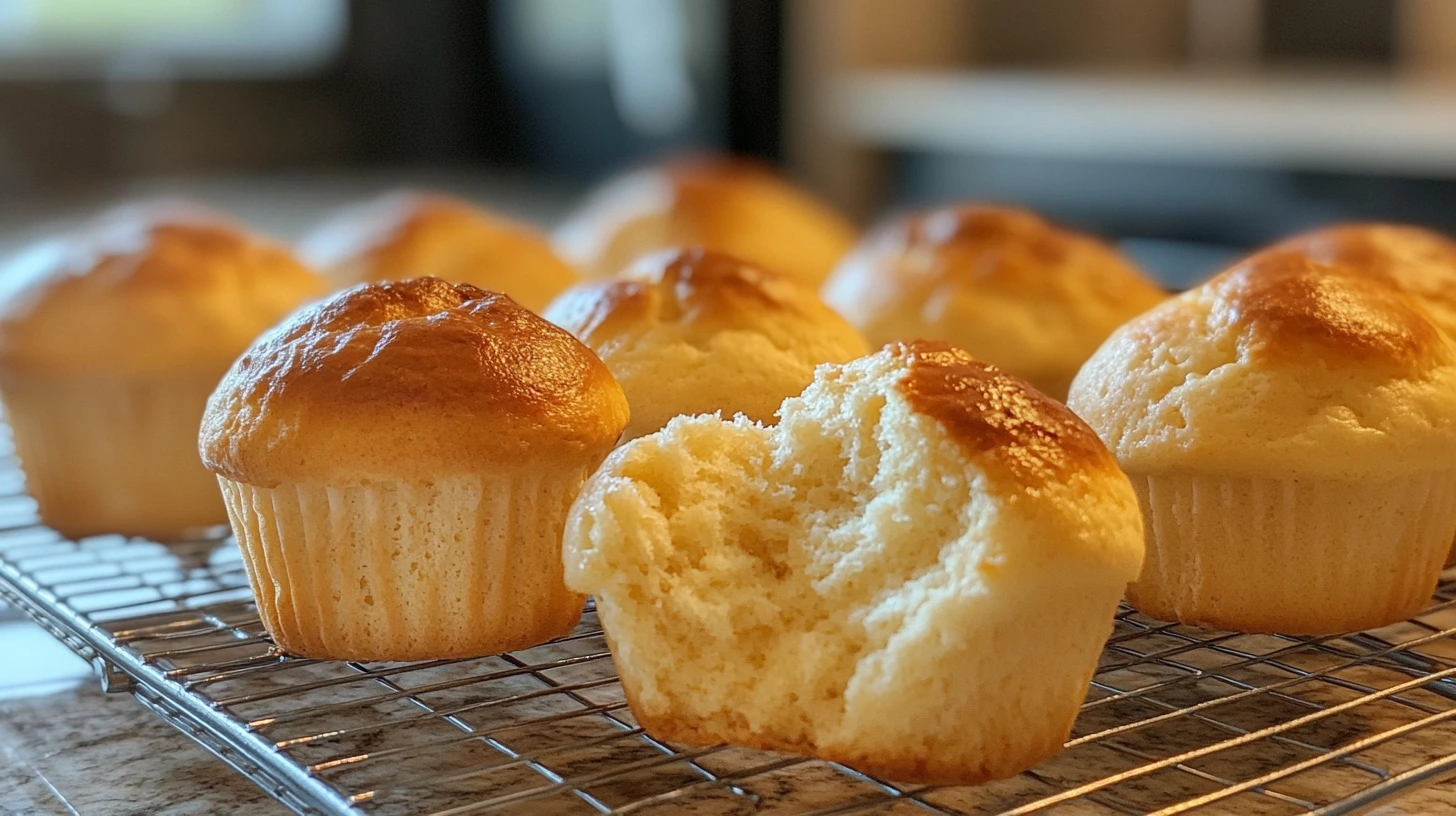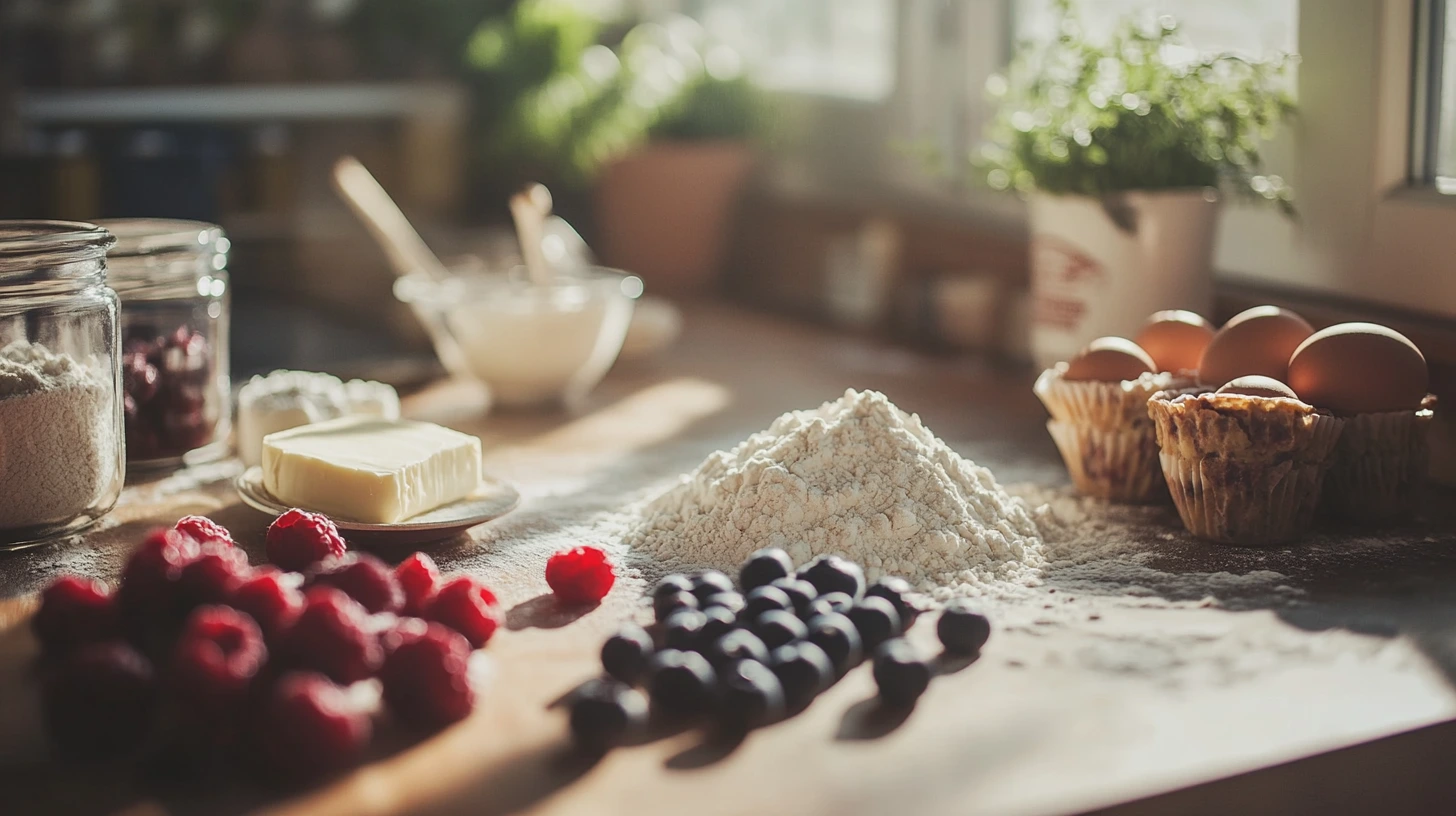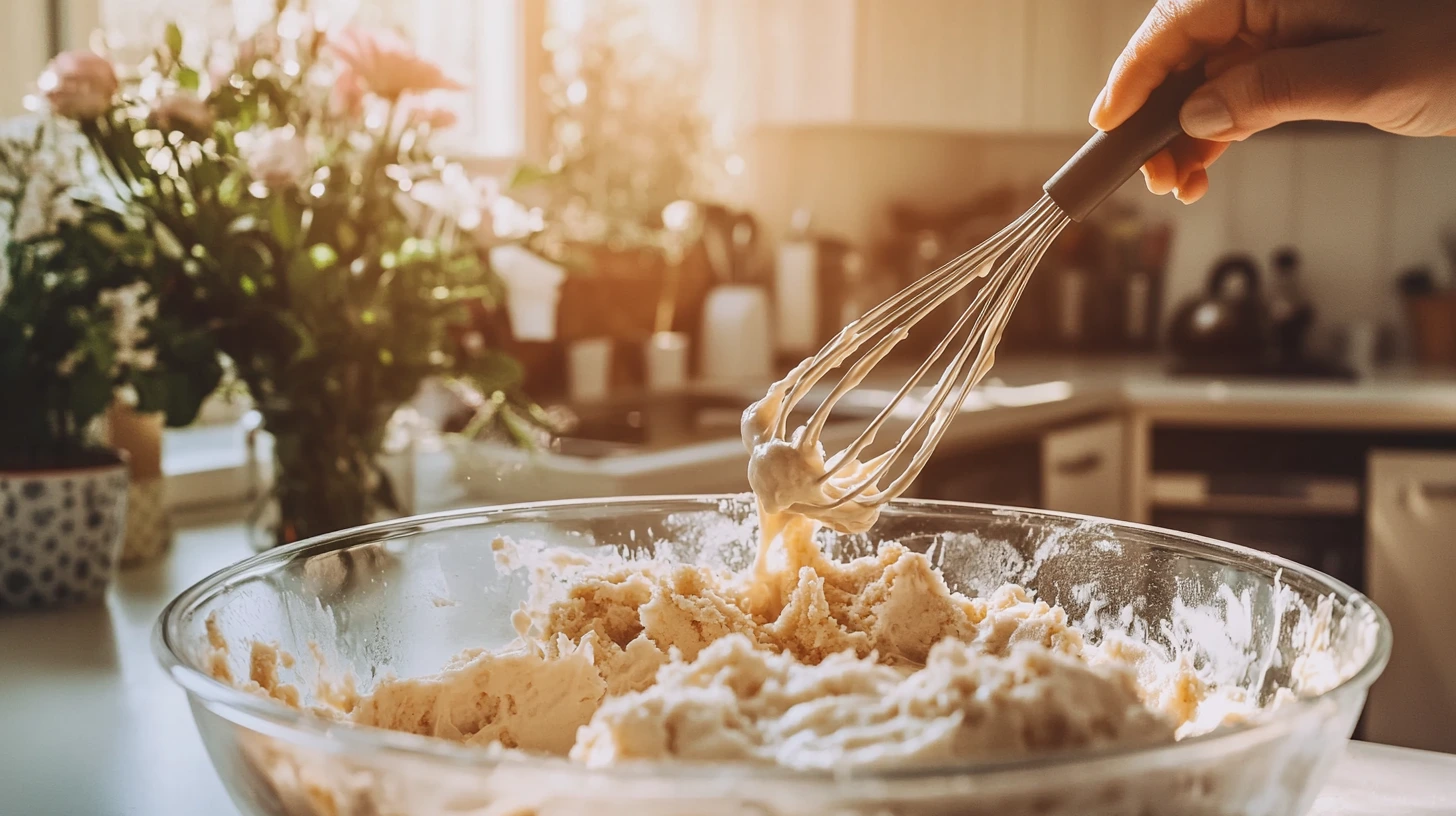What is the Secret to Making Moist Muffins?
Introduction to Moist Muffins
Muffins are a beloved treat that can be enjoyed anytime, whether for breakfast, a snack, or even dessert. However, nothing ruins the experience more than biting into a dry and crumbly muffin. Achieving the perfect texture – soft, fluffy, and moist – requires understanding the proper techniques and ingredients. So, what’s the secret to making moist muffins every time? Let’s dive into the factors that make a significant difference.
The Secret to Making Moist Muffins
If you’ve ever wondered how to bake perfectly moist muffins every time, the secret lies in understanding the science of baking and a few key ingredients. This article will guide you through tips and techniques to ensure your muffins turn out soft, fluffy, and never dry.
- Incorporate Moisture-Rich Ingredients
Using moisture-rich ingredients is essential for achieving the right texture. Adding options like buttermilk, yogurt, or applesauce can keep muffins soft while adding a slight tang or natural sweetness. For example, you can further explore how applesauce replaces ingredients in cake mix to understand its role in baked goods.
- Avoid Overmixing the Batter
Overmixing the batter activates too much gluten, producing dense and dry muffins. Gently fold the wet ingredients into the dry mixture until just combined. It’s okay if the batter has a few lumps.
- Mind the Baking Time and Temperature
A common mistake is overbaking. Set your timer carefully and check muffins a few minutes before the timer goes off. They should spring back lightly when touched. For inspiration on precise timing and texture, try recipes like these zucchini muffins or easy blueberry muffins.
- Use Oil Instead of Butter
Butter adds flavor but can dry out muffins if overbaked. Oil, on the other hand, contributes more moisture and softness to baked goods. Consider experimenting with different oils or pairing them with other moisture-boosting ingredients like bananas.
- Add Fresh Fruits or Purees
Adding fresh fruit, like blueberries, strawberries, or even pumpkin puree, can elevate moisture. Learn more with recipes like this pumpkin muffin recipe for a seasonal twist.
- Proper Storage After Baking
Once your muffins cool, store them in an airtight container to maintain moisture. If you plan to freeze them, wrap each muffin individually and defrost as needed.
Key Ingredients for Moist Muffins

Flour: The Base of Muffins
Flour is the foundation of any muffin recipe, providing structure and stability. However, the type and amount of flour you use significantly affect the final texture.
- Choose all-purpose flour: It offers the right balance of protein and softness, perfect for tender muffins.
- Measure accurately: Use the spoon-and-level method to avoid adding too much flour, which can result in a dry, dense texture.
- Experiment with alternatives: Incorporating a small amount of whole wheat flour, almond flour, or oat flour can add moisture and a unique flavor without compromising softness.
Fat: Butter, Oil, or Other Fats
Fats are essential for creating a moist and tender crumb in muffins. They coat the flour’s proteins, limiting gluten formation and keeping the muffins soft.
- Butter: Adds rich flavor and a slightly denser texture. Melted butter works best for moisture retention.
- Oil: Vegetable or canola oil is an excellent choice for ensuring consistent moisture. Oil-based muffins are often softer and stay moist longer.
- Other fats: Ingredients like coconut oil, cream cheese, or sour cream can add moisture and richness to your muffins.
Pro Tip: A mix of butter (for flavor) and oil (for softness) works wonders for ultimate moisture.
Liquid Ingredients: Milk, Yogurt, or Buttermilk
The right liquid ingredients ensure the batter stays hydrated and produces soft muffins.
- Milk: Regular milk provides moisture, but full-fat dairy enhances richness.
- Yogurt: A star ingredient for moist muffins, yogurt (especially Greek yogurt) adds moisture and a slight tang.
- Buttermilk: This slightly acidic liquid tenderizes the muffin crumb while keeping it soft and fluffy.
Tip: Substituting buttermilk or yogurt for regular milk in a recipe can improve moisture significantly.
Sweeteners and Their Role in Moisture
Sweeteners do more than add flavor—they also play a crucial role in keeping muffins moist by attracting and holding water.
Brown Sugar vs. Granulated Sugar
- Brown sugar: Contains molasses, which adds moisture and a deeper flavor. It’s an excellent choice for creating soft, moist muffins.
- Granulated sugar is great for sweetness but lacks the moisture-retaining qualities of brown sugar. Combining both types can give the best of both worlds.
Honey and Maple Syrup
- Honey: Acts as a natural humectant, drawing moisture into the muffins and adding subtle floral notes.
- Maple syrup: Adds sweetness, moisture, and a warm, complex flavor. It works particularly well in spiced muffins.
Tip: When using liquid sweeteners, reduce other liquids slightly to maintain the correct batter consistency.
Eggs: More than Just a Binding Agent
Eggs are often considered a binding agent but also contribute moisture and richness to muffins. The yolk, in particular, adds fat that softens the crumb.
- Room-temperature eggs blend more evenly into the batter, ensuring consistent moisture distribution.
- Egg substitutes: If you’re baking egg-free, options like mashed bananas, applesauce, or flax eggs can add structure and moisture.
Adding Fruits or Vegetables for Extra Moisture
Incorporating fresh or pureed fruits and vegetables is a foolproof way to add natural moisture to muffins while enhancing their flavor.
- Fruits: Mashed bananas, applesauce, blueberries, or grated apples release juices during baking, keeping the muffins tender.
- Vegetables: Grated zucchini, carrots, or pumpkin puree add moisture without significantly altering the muffin’s flavor profile.
The Science of Baking Moist Muffins
How the Ingredients Interact
The secret to baking moist muffins lies in how the ingredients work together. Each component plays a distinct role in the final texture:
- Flour provides structure but must be balanced with fats and liquids to prevent dryness.
- Fats (like butter or oil) coat the flour proteins, limiting gluten development and ensuring a tender crumb.
- Liquids (milk, yogurt, or buttermilk) hydrate the batter, creating steam during baking that makes muffins rise and remain soft.
- Thanks to their fat content, eggs bind ingredients while adding richness and moisture.
- Sugars act as humectants, drawing in moisture and preventing muffins from drying out.
The interaction between these ingredients is key: too much flour and too little fat or liquid result in dry muffins, while an imbalance of liquid and structure can lead to soggy or dense results. Understanding this balance helps ensure perfect muffins every time.
The Importance of Mixing Technique
Mixing is one of the most critical factors in achieving moist muffins. The goal is to combine the ingredients just enough to incorporate them without overdeveloping gluten, which leads to harsh and dry muffins.
Overmixing vs. Undermixing
- Overmixing: When you mix the batter excessively, the gluten in the flour becomes activated, creating a dense, rubbery texture instead of a light and moist crumb. Overmixing can also prevent muffins from rising properly.
- Undermixing: Conversely, undermixing can leave streaks of flour or lumps, leading to uneven baking and pockets of dryness.
The Sweet Spot: Stir the batter until the dry ingredients are moistened. It’s okay if the batter looks slightly lumpy – this is perfectly normal for muffin batter.
Tips and Tricks to Ensure Moist Muffins
The Right Oven Temperature
The temperature of your oven plays a significant role in achieving moist muffins. Baking at the correct heat ensures the muffins rise properly and retain moisture.
- Preheat your oven to the recommended temperature before placing the muffins inside. This ensures even baking.
- Avoid overly high heat: Baking muffins at too high temperatures (above 400°F/200°C) can cause the outer layer to bake too quickly, drying out the crust while leaving the interior undercooked.
- Ideal range: Most muffin recipes bake perfectly at 350°F to 375°F (175°C to 190°C). This allows the muffins to rise gradually while retaining moisture.
- Rotate the pan: Halfway through baking, rotate the muffin tin to ensure even baking and avoid hot spots that can dry out parts of the muffins.
Proper Muffin Tin Preparation
How you prepare your muffin tin can also impact moisture retention. Proper greasing and lining ensure muffins don’t stick or dry out.
- Use liners: Paper or silicone muffin liners help lock in moisture, keeping the edges soft and tender.
- Grease thoroughly: If you are not using liners, lightly grease the muffin tin with oil, butter, or a non-stick spray to prevent the muffins from sticking without over-crisping the edges.
- Avoid overfilling: Fill each muffin cup about two-thirds full to allow room for rising while preventing spillage or uneven baking.
When to Check for Doneness
Checking for doneness at the right time is crucial to avoid overbaking, which is one of the leading causes of dry muffins.
- Start checking early: Check your muffins about 2-3 minutes before the recipe’s recommended bake time. Depending on your oven, muffins can finish baking quickly.
- The toothpick test: Insert a toothpick into the center of a muffin. They are done if it comes out clean or with a few moist crumbs (not wet batter).
- Spring-back test: Gently press the top of a muffin – it should spring back lightly. If it feels firm, it’s ready.
- Avoid “just a bit more” temptation: Even a couple extra minutes can dry out muffins, so remove them as soon as they’re ready.
Letting Muffins Rest After Baking
Allowing muffins to rest after baking is an often-overlooked step but vital for keeping them moist.
- Cool in the tin for 5 minutes: After removing them from the oven, let the muffins sit in the tin for about 5 minutes. This allows them to set without continuing to cook.
- Transfer to a cooling rack: After 5 minutes, transfer the muffins to a wire rack to cool completely. Leaving them in the tin for too long can trap steam, leading to sogginess.
- Store properly: Once cooled, store muffins in an airtight container to prevent drying. Add a paper towel to absorb excess moisture and keep the tops soft.
Common Mistakes to Avoid
Using the Wrong Type of Flour
Flour is the foundation of any muffin recipe, and using the wrong type can drastically affect the texture and moisture.
- All-purpose flour is the best choice for muffins, as it provides the perfect balance of structure and softness.
- High-protein flours: Avoid bread flour or other high-protein flours, as they develop more gluten, resulting in dense and dry muffins.
- Whole wheat flour: While nutritious, using only whole wheat flour can lead to dry muffins. Mix it with all-purpose flour for a lighter texture if you want to include it.
- Measure correctly: Always measure flour accurately using the spoon-and-level method to prevent adding too much, which dries the batter.
Tip: Choose a high-quality, all-purpose gluten-free flour blend for gluten-free baking to maintain moisture and structure.
Skipping or Overusing Liquids
Liquids play a crucial role in muffin texture by hydrating the flour and creating steam during baking to keep the crumb soft. However, both too little and too much can ruin your muffins.
- Too little liquid: Insufficient milk, buttermilk, or yogurt leads to dry, crumbly muffins. Ensure your recipe has the right balance of liquids.
- Too much liquid: Adding too much liquid makes the batter overly thin, leading to muffins that don’t rise well and have a gummy texture.
- Balancing moisture: Ingredients like yogurt, buttermilk, or fruit purees (e.g., applesauce or bananas) add extra moisture without thinning the batter.
Tip: Follow the recipe closely and adjust liquids only when necessary, such as adding additional mix-ins like fruits or nuts.
Baking at Incorrect Temperatures
Baking temperature directly impacts muffin texture and moisture. Incorrect temperatures can result in unevenly baked or dried-out muffins.
- Too high: Baking excessively high temperatures causes muffins to bake too quickly on the outside while remaining undercooked or dry inside.
- Too low: A low oven temperature can cause muffins to spread out rather than rise, resulting in dense, flat muffins.
- Inconsistent ovens: Ovens can sometimes run hotter or more remarkable than the displayed temperature. Use an oven thermometer to ensure accuracy.
Moist Muffin Recipe: A Step-by-Step Guide
Ingredients List
To create moist, tender muffins, you’ll need the following ingredients:
Dry Ingredients:
- 2 cups all-purpose flour
- One tablespoon of baking powder
- ½ teaspoon baking soda
- ½ teaspoon salt
- ¾ cup brown sugar (packed)
- ¼ cup granulated sugar
Wet Ingredients:
- Two large eggs (room temperature)
- ½ cup vegetable oil (or melted butter for added flavor)
- 1 cup buttermilk (or plain yogurt)
- One teaspoon of vanilla extract
Optional Mix-Ins for Extra Moisture:
- 1 cup mashed banana, pumpkin puree, or applesauce
- 1 cup fresh or frozen berries, grated zucchini, or carrots
Directions
Mixing the Dry Ingredients
- Whisk together the all-purpose flour, baking powder, baking soda, salt, brown sugar, and granulated sugar in a large bowl.
- Break up any clumps of brown sugar to ensure even distribution.
Combining Wet Ingredients
- Combine the eggs, vegetable oil, buttermilk, and vanilla extract in a separate bowl.
- Add a fruit puree (like mashed banana or pumpkin) to the wet ingredients and mix until smooth.
Folding in the Wet and Dry Ingredients
- Pour the wet ingredients into the bowl with the dry ingredients.
- Gently fold the mixture using a spatula, stirring until the dry ingredients are moistened. Avoid overmixing—it’s okay if the batter is a little lumpy.
- If using berries, grated vegetables, or nuts, gently fold them in at the very end.
Baking Tips for Perfect Muffins
- Prepare the muffin tin: Line your muffin tin with paper liners or lightly grease the cups with oil or non-stick spray.
- Fill the muffin cups: Spoon the batter into the cups, filling each about ⅔ full to allow room for rising.
- Bake at the right temperature: Preheat your oven to 375°F (190°C) and bake for 18-22 minutes or until the tops are golden and a toothpick inserted in the center comes clean.
- Cool the muffins: Let them cool in the tin for 5 minutes, then transfer them to a wire rack to cool completely.
Variations for Extra Moisture
Enhance the moisture and flavor of your muffins with these variations:
- Banana Muffins: Add 1 cup of mashed ripe bananas and a sprinkle of cinnamon for extra softness.
- Zucchini Muffins: For a moist and healthy twist, incorporate 1 cup of grated zucchini (excess water removed).
- Pumpkin Muffins: Use 1 cup of puree and a dash of nutmeg for a seasonal treat.
- Blueberry Muffins: Fold in 1 cup of fresh or frozen blueberries, tossing them in flour first to prevent them from sinking.
- Chocolate Chip Muffins: Add 1 cup of chocolate chips and a splash of milk for gooey, moist muffins.
FAQs about Moist Muffins
What can I add to my muffin batter to make it more moist?
To boost moisture in your muffins, consider these additions:
- Fruit purees: Mashed bananas, applesauce, or pumpkin puree add natural moisture and flavor.
- Yogurt or sour cream: These ingredients add richness while keeping muffins tender.
- Buttermilk: Its acidity softens the crumb and keeps muffins moist.
- Liquid sweeteners: Honey or maple syrup draw in and retain moisture.
- Oil: Vegetable or canola oil works wonders for consistently moist muffins.
Experiment with combinations like buttermilk, mashed bananas, yogurt, and berries for deliciously moist results.
Can I make my muffins moist without using oil or butter?
Yes, you can skip oil or butter and still achieve moist muffins by using:
- Fruit or vegetable purees: Mashed bananas, applesauce, pumpkin puree, or grated zucchini are excellent fat substitutes.
- Yogurt or buttermilk: These add moisture without the need for added fats.
- Nut butter: Almond or peanut butter can replace oils while adding creaminess.
When substituting, adjust your liquids slightly to maintain the batter’s consistency.
How do I know when my muffins are fully baked?
To check for doneness:
- Toothpick test: Insert a toothpick into the center of a muffin. The muffins are done if they come out clean or have a few moist crumbs (not a wet batter).
- Spring-back test: Lightly press the top of a muffin. If it springs back, it’s ready.
- Visual cues: The muffins should have a golden brown top and pull slightly away from the edges of the muffin tin.
Avoid overbaking, as even a few extra minutes can dry the muffins.
Can I freeze my moist muffins?
Absolutely! Freezing muffins helps preserve their moisture and freshness:
- Cool completely: Let muffins cool to room temperature before freezing.
- Wrap individually: Wrap each muffin in plastic wrap or aluminum foil.
- Store in an airtight container: Place wrapped muffins in a freezer-safe bag or container to prevent freezer burn.
- Freeze for up to 3 months: When ready to eat, thaw at room temperature or warm in the microwave for 20-30 seconds.
How do I store moist muffins to keep them fresh?
To keep muffins moist and fresh:
- Store at room temperature: Place muffins in an airtight container lined with a paper towel to absorb excess moisture. Add another paper towel on top.
- Avoid refrigeration: Refrigerating muffins can dry them out.
- Eat within 3-4 days: For more extended storage, freeze the muffins as described above.
Tip: If muffins start to dry out, a quick 10-second zap in the microwave can help revive their moisture.
What type of flour is best for moist muffins?
The best flour for moist muffins is:
- All-purpose flour: It provides the ideal balance of structure and softness, creating tender, moist muffins.
- Alternative flours (in moderation): Whole wheat flour, almond flour, or oat flour can be used, but mix them with all-purpose flour to prevent dryness.
Conclusion:
Prevent Soggy Muffins
While moisture is essential, too much can make muffins soggy. If you’re dealing with this issue, check out why zucchini muffins get soggy for troubleshooting tips.
By following these steps, you’ll unlock the secret to baking muffins that are consistently soft, fluffy, and moist. Whether experimenting with banana-based baking or creating seasonal favorites, these tips ensure your muffins are always perfect!



